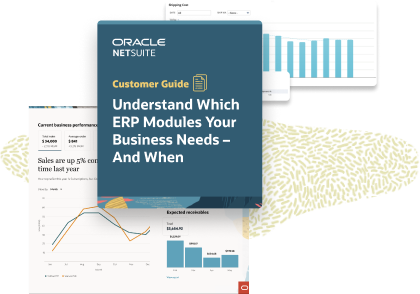Benefits
Financial and Operational Leadership
CFOs are taking on more responsibility than ever. Beyond ensuring strong financial controls and managing cash flow, they’re now expected to forecast with greater accuracy, help acquire and retain talent, and lead efforts to add and refine technology in a way that benefits the entire business. They are also increasingly being asked to put their financial lens on new strategies for growth and other key decisions.
NetSuite manages end-to-end business processes with an integrated suite of cloud business applications that more than companies rely on every day. Our customers have gone public, raised large funding rounds, expanded internationally, and handled rapid growth on NetSuite, all while maintaining strict controls in an audit-ready system.
It’s a system that empowers CFOs to capitalise on the opportunity to become one of the most trusted and respected decision-makers in their organisations.

A Resource Hub to Help CFOs Stay Ahead
Visit CFO of the Future(opens in a new tab)
Leading Associations that Trust NetSuite




Solutions Features
Enhance Decision-Making
From day one, realise the value of real-time financial and operational dashboards that display customisable KPIs, cash flow, key reports, budget information, and other critical data. CFOs and their teams can tailor these dashboards to their exact preferences. Embedded reporting and analytics foster smarter, faster decisions that can support your business’s success and accelerate.

Financial Oversight, Planning, and Reporting
As financial planning and analysis becomes an increasingly big part of the CFO’s role, your team can quickly and easily produce budgets and forecasts, model what-if scenarios, and generate more advanced reports in NetSuite. The application automatically pulls financial, operational, and headcount data to generate these models and reports, making it easy to update them and preventing costly mistakes.

Optimise and Automate Business Processes
NetSuite’s unified solution for operational, customer, employee, and financial data and processes offers many advantages over individual departmental systems. This helps boost the efficiency and accuracy of order-to-cash, procure-to-pay, and other critical processes that touch multiple departments because everything is connected. NetSuite speeds the financial close process and automates other cumbersome, manual tasks, freeing finance to focus on more strategic initiatives and preventing the need to constantly add headcount as you grow.

Governance and Compliance
NetSuite provides the built-in financial controls, audit trails, and compliance reports you need to reduce the risk of fraud and noncompliance. You can limit each employee’s access to what they need to do their job and codify approval workflows to proactively avoid these issues.

Diversify and Expand Your Business
NetSuite makes it easier to grow. It can support multiple subsidiaries, 190 currencies, 27 languages, and a wide array of tax and regulatory requirements, all in a single system, to help you better manage your global operations. No surprise that NetSuite is now used in more than countries and dependent territories.
NetSuite prepares your business for the next influx of capital, whether that’s private equity, venture capital, M&A or IPO.

Learn how NetSuite Cloud ERP Solutions can suit your Business
Schedule My Free Consultation(opens in new tab)
If anyone wants business data or insights, they go to NetSuite, not another system or someone’s spreadsheet. It's the source of truth for everything we do.

Resources

Guides & Blogs
Go deep into topics of interest to CFOs.






